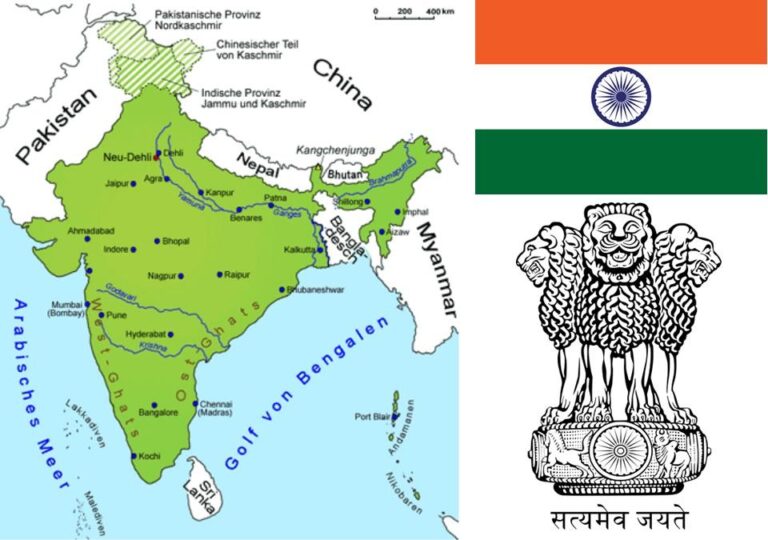India’s ambitions to accelerate the adoption of electric vehicles (EVs) have encountered a significant setback as China’s recent restrictions on rare earth exports threaten to disrupt critical supply chains. In a move that has sent ripples across the global EV industry, the curbs imposed by Beijing are complicating India’s efforts to secure essential minerals needed for battery production and electric motor manufacturing. This development underscores the growing geopolitical risks in the race toward clean energy and highlights the challenges faced by emerging EV markets in reducing dependence on dominant suppliers.
China’s Rare Earths Export Restrictions Disrupt India’s Electric Vehicle Ambitions
India’s ambitious electric vehicle (EV) industry is facing a significant hurdle as China tightens export controls on rare earth elements critical for battery manufacturing. These materials, including neodymium and dysprosium, are essential for producing high-performance magnets used in EV motors. With China controlling around 80% of the global supply, the export restrictions have led to skyrocketing prices and supply chain uncertainties, placing pressure on Indian manufacturers striving to meet aggressive production targets.
Key challenges emerging from the situation include:
- Increased costs for raw materials impacting overall EV affordability
- Potential delays in vehicle production timelines
- Heightened competition for scarce resources among global EV makers
- Urgent need for India to diversify its rare earth sourcing and boost domestic extraction
| Rare Earth Element | India’s Current Import Dependence | Impact on EV Sector |
|---|---|---|
| Neodymium | 85% | High cost increase, motor magnet shortage |
| Dysprosium | 80% | Reduced battery efficiency, production delays |
| Lanthanum | 75% | Limited impact but rising prices |
India’s Supply Chain Vulnerabilities Exposed Amid Growing EV Demand
India’s ambitions to scale up electric vehicle (EV) production are increasingly jeopardized by its heavy dependence on rare earth elements and critical minerals, predominantly supplied by China. As Beijing tightens export controls on these essential raw materials, Indian manufacturers face escalating costs and procurement delays, which ripple through the entire EV supply chain. This bottleneck highlights a glaring vulnerability: the absence of a robust domestic mining and refining infrastructure capable of meeting the surging demand for rare earths like lithium, cobalt, and neodymium. Industry experts warn that without strategic diversification, India risks falling behind global EV markets, undermining both its green energy goals and economic growth plans.
Efforts to mitigate this supply crunch include exploring alternative international partnerships and boosting investments in indigenous resource development. However, these initiatives are challenged by long gestation periods and geopolitical complexities. Notably, manufacturers report the following immediate impacts:
- Component shortages causing production slowdowns and increased lead times.
- Rising raw material costs putting pressure on EV pricing and consumer affordability.
- Supply chain fragmentation with increased reliance on third-party intermediaries.
| Critical Mineral | India’s Import Share from China | Impact on EV Components |
|---|---|---|
| Lithium | 70% | Batteries |
| Cobalt | 65% | Battery Cathodes |
| Neodymium | 80% | Permanent Magnets |
Strategic Steps for India to Diversify Rare Earth Sources and Boost Domestic Production
To mitigate dependency on China for rare earth elements, India must pursue a multi-pronged strategy focused on resource diversification and domestic growth. Geological surveys should be intensified to identify unexplored reserves across regions such as Odisha, Jharkhand, and Andhra Pradesh. Simultaneously, fostering partnerships with countries rich in rare earth minerals-like Australia, the United States, and Brazil-can secure alternative supply chains. These efforts need to be backed by streamlined regulatory frameworks that fast-track mining leases and environmental clearances, ensuring rapid development without compromising sustainability.
Boosting domestic production calls for significant investment in research and development to enhance extraction and processing technologies. Encouraging public-private collaborations can accelerate the establishment of refineries and recycling units, reducing waste and lowering costs. A focused skill development program tailored to this sector will cultivate a specialized workforce. Below is a snapshot of potential strategic pillars for India’s rare earth ambitions:
| Strategic Pillar | Key Focus | Expected Impact |
|---|---|---|
| Resource Mapping | Comprehensive surveys & exploration | Identify new deposits, reduce import reliance |
| International Alliances | Trade agreements & joint ventures | Secure diversified supply chains |
| Technological Innovation | R&D in extraction & processing | Boost efficiency & product quality |
| Skill Development | Training programs & capacity building | Workforce readiness for advanced mining |
| Regulatory Reforms | Streamlined approvals | Accelerate project implementation |
The Way Forward
As India accelerates its push toward electric vehicle adoption, the recent restrictions imposed by China on rare earth exports present a formidable challenge to the nation’s ambitions. With China controlling a significant share of the global rare earth supply, India’s EV industry must now navigate potential supply chain disruptions and seek alternative sourcing strategies to sustain its growth trajectory. How New Delhi responds to this evolving geopolitical and economic landscape will be crucial in shaping the future of its electric mobility aspirations.




